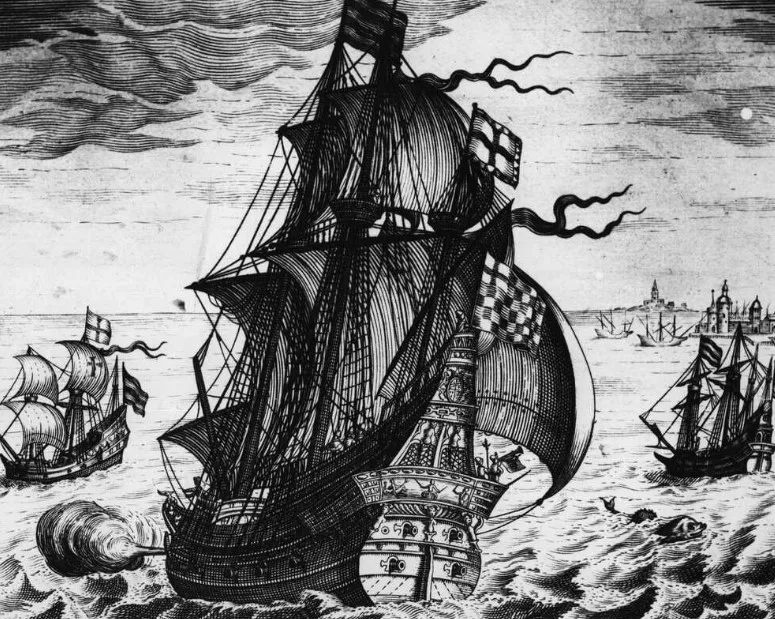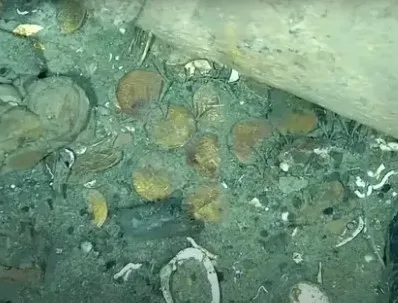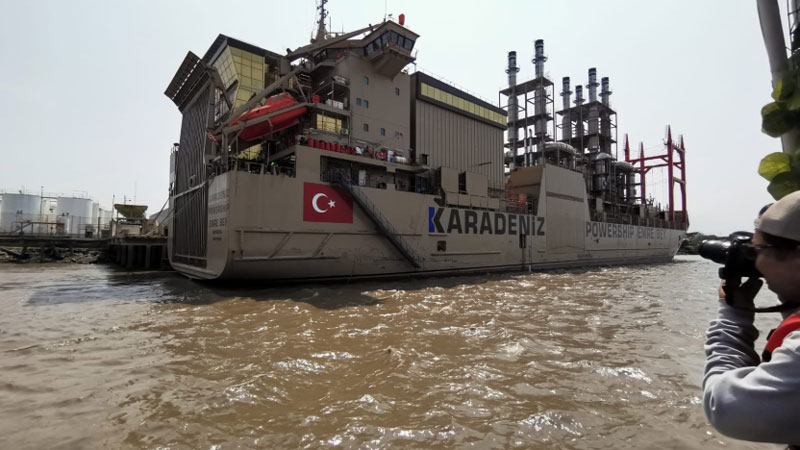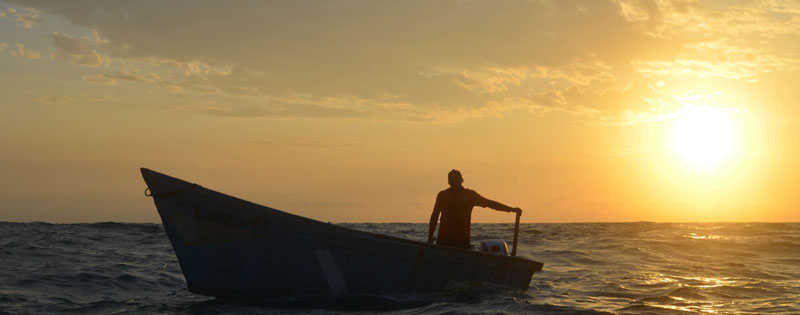Salvage company sues Colombia for share of $20 billion sunken treasure off the coast of Cartagena
By Erin Snodgrass
A sunken Spanish warship that lay undiscovered at the bottom of the ocean for nearly three centuries is spurring a modern-day legal battle over who has the rights to its antique treasures worth billions of dollars.
The San José galleon, which sank off the coast of Cartagena, Colombia, in 1708, contained “the biggest treasure in the history of humanity,” an October legal filing from the government of Colombia said.

The Spanish galleon San José sank off the coast of Colombia in 1708 carrying what is believed to be $20 billion in gold, silver and precious stones.
Now, more than 300 years after the San José went down, a US salvage company is suing the Colombian government for half the ship’s treasures, saying it discovered the wreck first in 1981.
When the San José sank in a battle against the British in 1708, the ship was carrying what is believed to be the most expensive cargo ever shipped from the New World, including more than 7 million pesos, 116 steel chests full of emeralds, and 30 million gold coins, according to court documents.
Most of the ship’s Spain-bound treasures were taken from Colombian and Peruvian mines using slave labor, NBC’s “Today” reported.
Court cases over the years estimated the treasure was worth anywhere from $4 billion to $20 billion, Bloomberg reported.
Current litigation over the ship stems from the US salvage company Sea Search Armada’s claim that it found debris from the San José wreck first in 1981 during an exploratory exhibition searching for “shipwrecked species” and other treasures in Caribbean waters.
Sea Search Armada — previously known as Glocca Morra — says it handed over the coordinates of the discovered debris to the Colombian government under an agreement that it would receive half the ship’s treasure, according to the company’s December 2022 notice of arbitration.

Some of the gold coins among the wreckage of the galleon San José.
But the Colombian government disputed many of Sea Search Armada’s claims in an October response, including the notion that the San José was even at the coordinates handed over by the company.
A 1994 report from the Colombian government said no shipwreck was found at or near the coordinates included in Glocca Morra’s initial 1982 report on the exhibition, according to Colombian legal filings in the case.
Glocca Morra never even explicitly reported the finding of the San José in its 1982 report, which makes no mention of the ship by name, the Colombian government alleges. In its notice of arbitration, Sea Search Armada said the report referenced the discovery of a “large shipwreck.”
“How can it be explained that a private company finds the biggest treasure in the history of humanity and fails to report it?” attorneys for the government wrote in the October response. “The answer is simple: because it did not find it.”
In 2015, President Juan Manuel Santos said the real San José shipwreck had finally been discovered but declined to make the coordinates public, saying they were a state secret.
Colombia has since said the ship and its treasures are a national heritage item and should be kept in the country.
Sea Search Armada, meanwhile, alleges the Colombian navy simply discovered parts of the same debris field it first found in 1981.
The company is suing for $10 billion — which it says is equivalent to half the value of the ship’s treasures — under the US-Colombia Trade Promotion Agreement.
The case is set to play out in the Permanent Court of Arbitration, an intergovernmental organization dedicated to dispute resolution among international entities. Hearings in the case are scheduled for the coming months, according to a procedural order, and a court tribunal is expected to try to issue a decision by February.
The race to exhume the treasure trove is heating up amid the brewing legal battle. Colombian President Gustavo Petro wanted the ship brought to ground before the end of his term in 2026, the country’s minister of culture told Bloomberg this month.
The minister of culture, Juan David Correa, told the outlet that Petro instructed officials to set up a public-private partnership or work with a private firm to get the ship above water as soon as possible.
Photos and videos of the ship show fine china, coins, and cannons littered across the ocean floor where the San José sank.
__________________
Credit: Business Insider

















